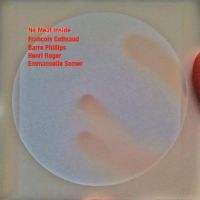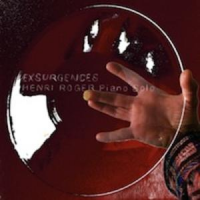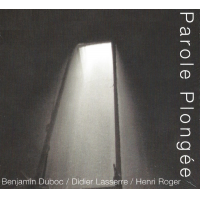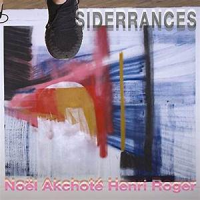Home » Jazz Musicians » Henri Roger
Henri Roger
Henri Roger (improvised music, contemporary electronic music) is a pianist, guitarist, composer and improvisor. His music is influenced by Keith Jarrett , Chick Corea, Cecil Taylor and by contemporary music . http://www.henriroger.com He worked with : Mama Bea Tekielski , Catherine Ribeiro , Tai Phong and improvisors like Paul Rogers, Barre Phillips, Bruno Tocanne, Emilie Lesbros, François Cotinaud, Eric-Maria Couturier, Emmanuelle Somer, Benjamin Duboc, Didier Lasserre, Noël Akchoté, Jean-Marc Foussat.
Tags
Francois Cotinaud / Barre Phillips / Henri Roger / Emmanuelle Somer: No Meat Inside

by Eyal Hareuveni
This live documentation of an ad-hoc French free improvising quartet was done at the festival Jazz sous les bigaradiers at La Gaude near Nice in November 2012. The friendly atmosphere of the club So What as well as the warm reception of the audience inspired the quartet for this noisy, wild, poetic and free performance. The quartet is comprised of highly experienced free improvisers: reed players François Cotinaud-- who collaborated before with saxophonist Steve Lacy, double bassist ...
read moreHenri Roger: Exsurgences (Solo Piano Improvisations)

by Eyal Hareuveni
Self-taught French pianist Henri Roger's set of solo piano free improvisations is spread across a DVD directed by video artist Anne Pesce, and also on vinyl. These nine improvisations, all numbered as “Exurgences 1" to “9," have a similar dense and restless character. Roger explores the sonic possibilities of piano keyboard, stressing the lower range as he sustains these sounds and forms a dramatic and intense, string of continuously colliding overtones. The first and longest improvisation, the ...
read moreHenri Roger: When Bip Bip Sleeps

by Eyal Hareuveni
How can a free improvised setting, a typical serious musical happening, serious-as-your-life, almost by definition, blend with music associated with fun, such as cartoons soundtracks? Quite naturally if open-minded musicians participate in such happening, ones who disregard such artificial distinctions and like to blur outdated conventions. French self-taught guitarist and pianist Henri Roger thought about such a mixed happening. He asked vocal artist {[Emile Lesbros}}, cello master Eric Maria Couturier, solo cellist for the noted Ensmble InterContemporain ...
read moreALL ABOUT JAZZ Extended Analysis Henri Roger: When Bip Bip Sleeps By EYAL HAREUVENI, Published: July 21, 2013 How can a free improvised setting, a typical serious musical happening, serious-as-your-life, almost by definition, blend with music associated with fun, such as cartoons soundtracks? Quite naturally if open-minded musicians participate in such happening, ones who disregard such artificial distinctions and like to blur outdated conventions. French self-taught guitarist and pianist Henri Roger thought about such a mixed happening. He asked vocal artist {[Emile Lesbros}}, cello master Eric Maria Couturier, solo cellist for the noted Ensmble InterContemporain that was founded by iconoclastic composer Pierre Boulez, and acclaimed jazz drummer Bruno Tocanne—now all named as The SéRieuse Cartoon Improvised Music Quartet—to join him for a free improvised session that references the work of American composer Scott Bradley





























